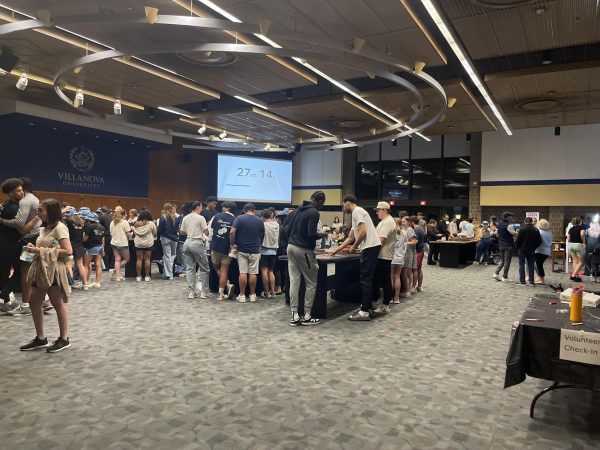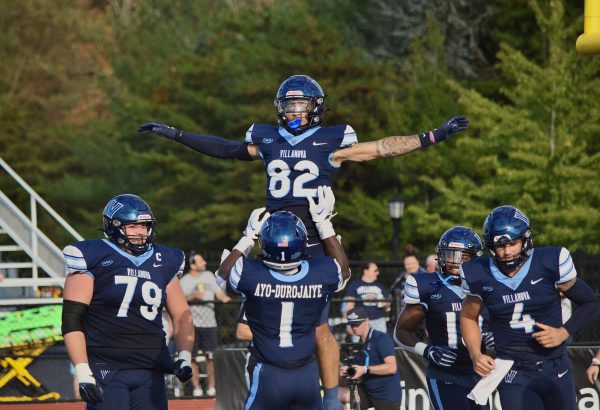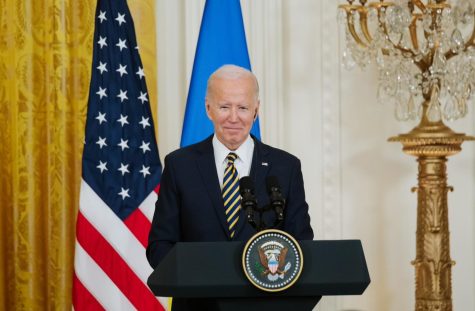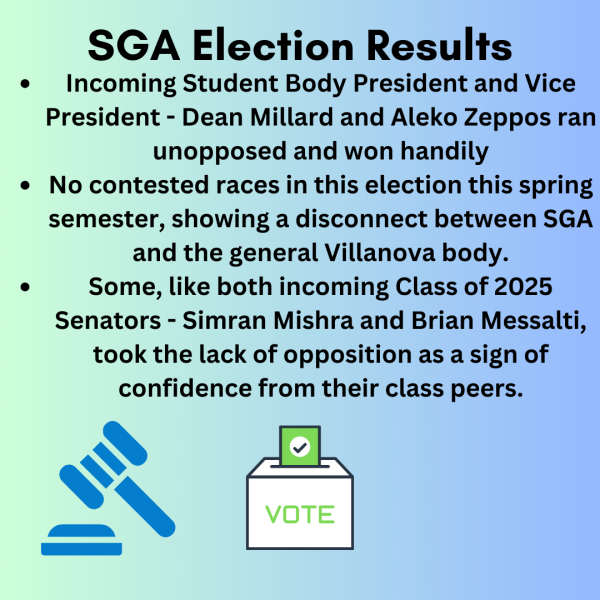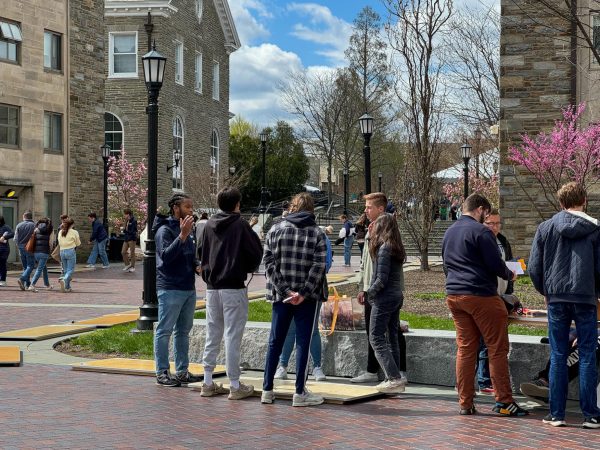Prof. finds similarities between Lamar’s hip hop and Ellison’s literature
April 30, 2015
Adam Bradley, an associate professor of English at the University of Colorado and a scholar of African American Literature and popular culture, visited Villanova to give a lecture entitled “Ralph Ellison listens to Kendrick Lamar and other Counterfactuals.” In his speech, he focused on hip-hop and rap music in comparison to literature.
Ralph Ellison, an American author from Oklahoma, is most famous for his novel, “Invisible Man.”
Bradley specializes in Ellison’s work and has written “Ralph Ellison in Progress” and currently works as the editor for Ellison’s unfinished novel, Three Days Before the Shooting.
In his talk, Bradley referred to Ellison as a “historical figure, as a political figure and of course as a literary figure. He became a way into hip-hop; his writing helped me understand how to listen with greater acuity.”
Many people, including Bradley, see strong similarities between Kendrick Lamar’s new album, “To Pimp a Butterfly,” and Ellison’s novel, Invisible Man.
One of Lamar’s songs, “King Kunta,” shows significant similarities to Ellison’s work. In chapter 13 of the Invisible Man, the main character is traveling from the country into Harlem where he buys yams from a street vendor. Bradley describes the character’s feelings of conflicted because the yams bring him back to his southern roots and African-American culture in the South.
The character feels like he should give up the parts of the past but decides that he cannot completely change himself as he eats the yam.
In his song, Lamar says, “The Yam is the power that be/You can smell it when I’m walking down the street.”
In addition to making these comparisons, Bradley also discussed the birth of Hip-Hop and briefly talked about Ellison’s roots. During Ellison’s time, the blues and jazz dominated the music culture.
After this, he talks about the beginning of hip-hop and rap era and how most of the music came from African-American and Latino communities.
Bradley also touched on the racism and segregation that Ellison experienced but emphasizes that he believes in the ideals and promise of the country as a whole.
After talking about what Ellison’s reaction to a bi-racial president, Barack Obama, would be, he remembers a quote that Ellison said about 50 years before America elected Obama into office.
“I would like to see a qualified Negro as president of the United States but I suspect that even if this were today possible, the necessities of office would shape his actions far more than his racial identity.”
Bradley went on to compare Ellison’s quotes and thoughts to some of the current American beliefs about a potential female president.
When asked about diversity at Villanova and other schools, Bradley expressed a different opinion than most people who think of the school population as generally uniform and homogeneous.
“I would say that Villanova is more diverse than it might appear. Students must understand diversity that may already exist,” said Bradley. “Everyone brings diversity and diversity should matter to everyone.”



